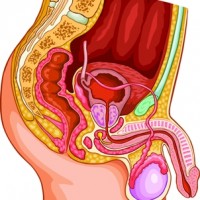Prostate Cancer Causes,symptoms and dignoses
One in nine men will develop prostate cancer in their lifetime. Indeed, this type of cancer holds the sad record of the most frequent male cancers in the world, just before lung cancer or colorectal cancer. Medical advances make this cancer treat relatively well nowadays. How to detect prostate cancer?
 |
| Prostate Cancer Causes,symptoms and Diagnosis |
What is Prostate Cancer?
Prostate cancer is the irregular proliferation of cells in the prostate, a male gland as large as a chestnut and located below the bladder. Like most cancers, prostate cancer can spread to other parts of the body when cells break away from the original tumor (metastases).
Risk Factors
Various factors can also increase or decrease the risk of mutation and, consequently, cancer. Scientists believe that the following factors increase the risk of prostate cancer:
• age: advancement in age, especially after age 65, is associated with increased risk.
• Family history: An immediate family history (father or brother) of prostate cancer doubles your risk (some families carry genetic mutations that increase the risk of getting prostate cancer).
• Ethnicity: Men of African descent are more likely to have prostate cancer, while those from East Asia are less likely to have prostate cancer.
• Overweight, physical inactivity: Men who are overweight and who are inactive are affected by higher rates of prostate cancer.
• Diet: Prostate cancer is much more common in Western countries than in Asian countries, among others. Feeding high in animal fats would increase the risk, while on the contrary, high intakes of selenium, vitamins E and D and soy products would low the risks.
What are the symptoms of prostate cancer?
In most cases, prostate cancer is only manifested at a relatively advanced stage by the presence of the following symptoms:
- an excessive frequency of urge to urinate with nocturnal predominance,
- an urge to urinate,
- difficulty urinating: low-intensity jet, incomplete urination, latency ...,
- pains felt during urination,
- total blockage of urination,
- blood in the urine,
- blood in the sperm,
- painful ejaculations,
- Erectile dysfunction ...
 |
| Prostate Cancer Causes,symptoms and Diagnosis |
The diagnosis
• Digital rectal examination
With the PSA (Prostate Antigen) assay, a digital rectal examination is a gold standard for suspicion of prostate cancer. The doctor introduces an index in the anus to feel the prostate and check its volume (increase?), Its consistency (hardening?) And its regularity. This test is recommended from the age of 50, and before that, if there is a family history of prostate cancer or suspicious signs. A digital rectal examination can only identify "palpable" tumors, knowing that it can also highlight the presence of other types of problems (hypertrophy).
• The dosage of PSA
The prostate makes a protein called prostate-specific antigen, or PSA (prostate-specific antigen), which can be assayed by a blood test. The value is expressed in nanograms per milliliter (ng/ml). The generally accepted normality threshold is 4 ng / ml, knowing that being below this threshold does not rule out any risk of cancer. In fact, it is more important to examine the variation of this value, especially a sharp increase. Finally, a patient with prostate cancer may have normal PSA, whereas a man without prostate cancer may have high PSA.
• Biopsy
It is performed if the value of the PSA rises regularly during successive checks or in case of abnormality to the digital rectal examination. Using a needle, fragments of prostatic tissue are removed through the rectum wall (transrectal route). The doctor is guided by ultrasound.
The samples are then analyzed (anatomy pathology), which confirms or eliminates the suspicion of cancer. In the case of confirmation, the examination of the tissues will also make it possible to determine, in particular, the aggressiveness of cancer (this is the "Gleason score").
Other techniques make it possible to define with greater precision the extent of cancer (extension assessment).
• The scanner (tomodensitometry)
It examines whether metastases have affected the lymph nodes.
• Magnetic resonance (MRI)
The images are more accurate than the scanner and they allow for good visuals the contours of the prostate (cancer exceeds the prostate capsule?) and search for metastases in the lymph nodes
• ScintigraphyInjection of a drug emitting radiation can detect bone metastases. ultrasound will visualize the functioning of the kidneys. The classification defines the extent
- the degree of extension - of a cancer of the prostate, the doctors take into account three criteria:
• the size of the tumor
• the involvement of the ganglia lymphatic • the presence of metastases in other areas of the body (bone, kidneys, liver ...) This allows to determine if it is cancer:
• localized: no extension beyond the prostate capsule (acronyms T1 / T2, N0, M0)
• locally advanced: beyond the prostate (bladder, rectum ...), without distant metastases and without involvement of the ganglia (T3 / T4, N0-x, M0 )
• with lymph node involvement: the nearby lymph nodes are touching es (all T, cN1 / pN1, M0)
• metastatic: distant metastases (all T, all N, M1) At these four stages is grafted the Gleason score, which varies from 2 to 10 and which determines aggressiveness cancer cells: the higher the score, the more aggressive the tumor is. Finally, the value of PSA further refines the evaluation. For localized forms of prostate cancer, we obtain the classification of d'Amico, which estimates the evolutionary risk (low, intermediate or high).





No comments:
Post a Comment